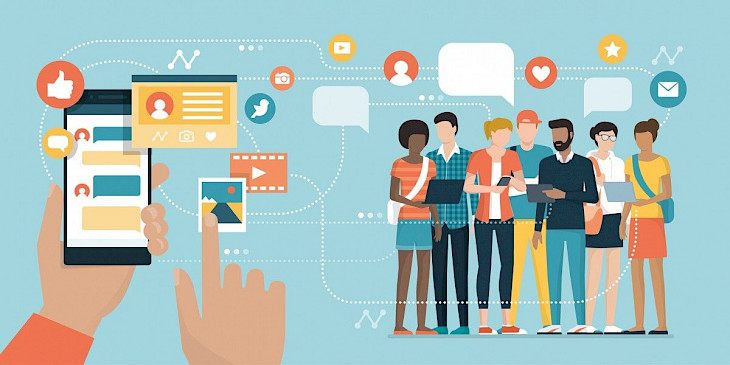
The explosion of social media platforms like Facebook, Twitter, Instagram, and LinkedIn in the last decade has fundamentally transformed our way of life. These platforms offer more than just entertainment and networking opportunities; they have begun to penetrate even traditionally sacrosanct areas such as college education, same impact casino online is beginning to have. But is this invasion a boon or bane for higher learning? Come along as we unravel the mystery of the relationship between social media and college education.
The Good: The Symbiotic Partners
1. A Digital Library: With platforms like LinkedIn Learning, YouTube, and various academically inclined Facebook groups, students now have an unprecedented wealth of knowledge at their fingertips. Whether it's a challenging calculus problem or understanding Kafka's literature, there's probably a video or a discussion thread about it.
2. Real-World Connect: Educational institutes can utilize platforms like Twitter and Instagram to showcase student achievements, alumni success stories, and even connect students with potential recruiters or industry leaders.
3. Collaboration: Tools like Slack, Microsoft Teams, or even Facebook groups have revolutionized group assignments. Students from diverse geographical locations can collaborate in real-time, share resources, or even hold virtual meetings.
4. Networking: Platforms like LinkedIn are invaluable for students to network with professionals, alumni, or even potential employers. They can showcase their achievements, participate in relevant group discussions, or even find internship opportunities.
5. Building Personal Brands: With the emergence of platforms like Medium, Instagram, and LinkedIn, students have an opportunity to showcase their talents, insights, and creativity to a broader audience. Whether it's a thought-provoking article, a piece of digital art, or a code snippet, students can use social media to build a personal brand, making them stand out in competitive job markets.
The Not-so-Good: The Parasitic Intruders
1. Distraction Central: The temptation to check that latest notification or to scroll endlessly through memes can be incredibly distracting. When every "study" session turns into a social media browsing spree, grades and understanding can suffer.
2. Mental Health Challenges: The pressure to portray a "perfect" life, the anxiety of FOMO (Fear Of Missing Out), or even cyberbullying can have significant detrimental effects on students' mental health.
3. Skewed Reality and Misinformation: Not everything on social media is accurate. With the rise of fake news and distorted realities, students might find it challenging to discern fact from fiction, affecting their world view.
4. Privacy Concerns: With data becoming the new oil, there are genuine concerns about data privacy. Students, often unaware of privacy settings, might inadvertently share personal or sensitive data, making them vulnerable.
5. Emotional Dependency: With the constant chase for likes, shares, and comments, there's a growing concern about students deriving their self-worth based on their social media engagement metrics. This dependency can lead to emotional distress if they don't receive the expected validation, affecting their self-esteem and overall well-being.
Striking the Right Balance
Recognizing the potential benefits and pitfalls of social media is the first step. Institutions can incorporate training sessions to help students navigate these platforms responsibly. Digital literacy, understanding the importance of verifying information, and recognizing the signs of cyberbullying are essential skills in today's digital age.
Moreover, universities can lead by example. By ensuring their digital footprint showcases genuine, verifiable, and constructive content, institutions can set the right tone for their students.
Professors too can play their part. Instead of banning phones or social media access, they can integrate them into the curriculum. How about a class discussion based on a trending LinkedIn article? Or maybe a project where students analyze the reach and impact of tweets on a current global event?
Students, on their part, can use apps or tools to monitor and control their social media usage. Setting specific "no social media" hours or even digital detox days can help maintain a healthy relationship with these platforms.
A Final Thought
Like the Yin and Yang, social media and college education can co-exist in harmony, provided we recognize and respect their individual strengths and weaknesses. By adopting a proactive rather than a reactive approach, colleges, students, and educators can harness the power of social media to foster an environment that's not just about scoring grades but about holistic learning and personal growth.





